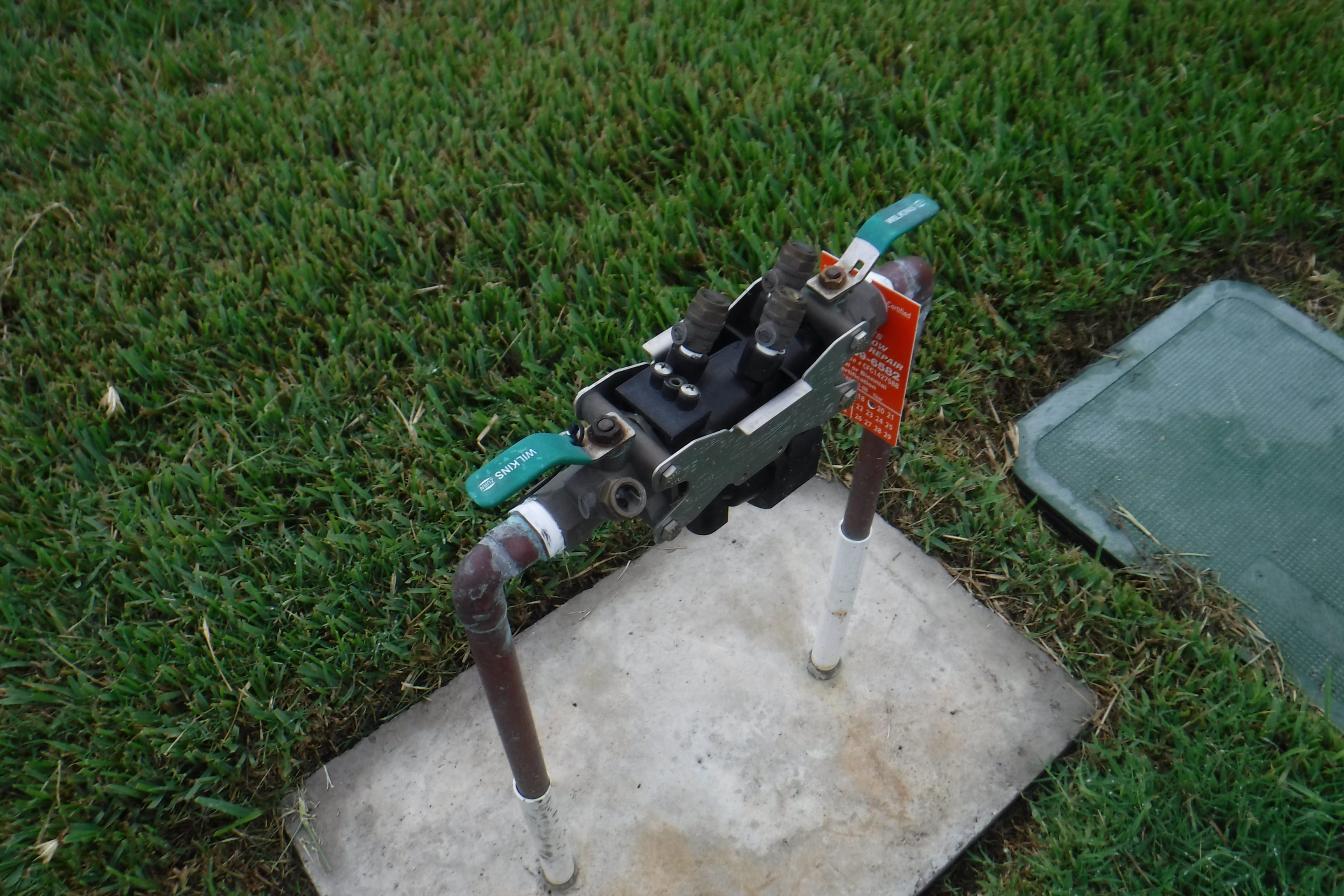
Buying or own a home on city water in Manatee County? Annual backflow prevention testing is required to avoid extra fees and penalties. Here is what you need to know about backflow preventers: A backflow preventer is a device that keeps water from flowing from your home back into the main water supply and introducing contaminates, especially when cross connections exist. A cross connection occurs when there is a link between potable and non-potable water (e.g. garden hose submerged in a pool). Water flows from high pressure to low pressure and when a water line breaks or there is a large demand on the water supply the pressure is reduced which can allow backflow to occur resulting contamination of the water supply that could cause illness or death. Backflow preventers are U shaped copper pipes located close to the water meter and have check valves with seals and springs that are subject to wear, fatigue and fouling and must be tested to ensure proper function. As a home owner, you are responsible for having annual testing performed by a registered service provider available at www.mymanatee.org/water. Fees vary between providers and you do not have to be present as testing typically only takes 5-10 minutes and occurs at the backflow preventer. Manatee County requires that you maintain a three-foot clearance from vegetation around the backflow preventer. Service providers will submit results to the counties reporting site. If you receive an annual notice, you have 30 days to have testing completed and submitted. If you receive a final notice, there are two options: either allow Manatee County to send their service provider at an increased cost, or hire your own service provider at the risk of still being charged by the county and results are required to be submitted within 7 days. If your backflow preventer fails, you will be given a water shut-off date which will be enforced until you have the unit brought into compliance and certified. This information is to help you understand a little known responsibility of home ownership that often presents itself as a notice from the county.

Recent Comments